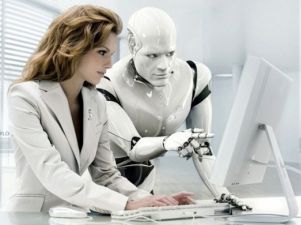Photo

STAR Conferences turned 1 today!
0 notes
Text
Central Banks and the IMF Warm Up to (Centralized) Digital Currencies
Sweden’s central bank, the Riksbank, is considering whether the country should introduce a purely digital form of government-backed money, perhaps using distributed ledger technologies (DLTs) similar to the blockchain technology underlying Bitcoin. This move is part of a recent trend: around the world, nations are considering cryptocurrencies issued by central banks; and recently, the managing director of the International Monetary Fund (IMF) gave a speech hinting at its interest in the concept.
For More details please visit https://bitcoinmagazine.com/articles/central-banks-and-imf-warm-centralized-digital-currencies/
0 notes
Text
Gait bio-mechanics in the era of data science

Data science has transformed fields such as computer vision and economics. The ability of modern data science methods to extract insights from large, complex, heterogeneous, and noisy data sets is beginning to provide a powerful complement to the traditional approaches of experimental motion capture and bio mechanical modeling. The purpose of this article is to provide a perspective on how data science methods can be incorporated into our field to advance our understanding of gait biomechanics and improve treatment planning procedures. We provide examples of how data science approaches have been applied to biomechanical data. We then discuss the challenges that remain for effectively using data science approaches in clinical gait analysis and gait biomechanics research, including the need for new tools, better infrastructure and incentives for sharing data, and education across the disciplines of biomechanics and data science. By addressing these challenges, we can revolutionize treatment planning and biomechanics research by capitalizing on the wealth of knowledge gained by gait researchers over the past decades and the vast, but often siloed, data that are collected in clinical and research laboratories around the world.
0 notes
Text
This Lumpy Robot Lends Endearing Touch to Social Bots

Jokes abound about ruthless robot overlords preparing for a global takeover, but if a new type of robot named "Blossom" is any indication, the future likely also holds a place for bots that are softer and squishier than you might expect.
Blossom isn't made of sleek and shiny metal, and has no jointed appendages and no blinking lights. Quite the opposite, in fact — it closely resembles a huggable, handcrafted child's toy and looks like it could have been painstakingly stitched together a century ago.
Yes, stitched. The unusual-looking Blossom, the result of a partnership between Cornell University's Human-Robot Collaboration and Companionship Lab (HRCCL), and Google Creative Technologies Singapore, has an internal framework made of soft, flexible parts. Encasing its "skeleton" is a crocheted fabric "skin," topped with a pair of wooden "ears." [Super-Intelligent Machines: 7 Robotic Futures]
Blossom's soft texture and fluid movements help it to appear less, well, robotic, Guy Hoffman, the robot's designer and a researcher with the Sibley School of Mechanical and Aerospace Engineering at Cornell, told the online magazine IEEE Spectrum.
"Having worked on expressive robots for many years, one of the biggest challenges of expressive social robots is to make a rigid, hard, and digitally controlled device move in a way that seems lifelike to the viewer," Hoffman told IEEE Spectrum.
"Blossom achieves this goal in part through its physical and mechanical structure, with a lot of softness built into the materials used to drive the robot," he said.
And there could be another advantage to the imperfections or odd qualities in Blossom's looks and motion — scientists have found that people respond more positively to robots that are less than perfect, rating robots as "more likeable" when they made mistakes, according to a recent study.
One potential use for a robot like Blossom could be as a companion and teaching aid for children on the autism spectrum. Using machine learning— an application of artificial intelligence that teaches computers to learn and improve from experiences — researchers are programming Blossom to recognize and react to content in videos. Children with autism could learn to better identify certain social cues by watching videos with an "empathetic" robot, Miguel de Andrés-Clavera, Head of Creative Technology at Google Asia Pacific, told IEEE Spectrum.
"We're excited about the results that we've seen with Blossom so far, and are now looking to develop it further with partners that wish to make this social learning platform for children in the spectrum more widely available to schools and families,"
0 notes
Text
Incredible worm like Robot can climb up into the air, make ins-elk bigger and squeeze into small holes.

A robot that can grow rapidly and turn corners has been created by scientists.
Stanford University researchers built the soft, worm-like robot, which can also squeeze itself through small holes.
It’s designed to mimic the movements of plants, which can grow around physical obstacles, but at speeds comparable to animals.
The robot is made of polyethylene and can grow from 28cm to 72m and change direction by pumping air through its internal chambers.
“Across kingdoms and length scales, certain cells and organisms navigate their environments not through locomotion but through growth,” reads the report, which was published in Science Robotics.
“This pattern of movement is found in fungal hyphae, developing neurons, and trailing plants, and is characterized by extension from the tip of the body, length change of hundreds of percent, and active control of growth direction. This results in the abilities to move through tightly constrained environments and form useful three-dimensional structures from the body.
“We report a class of soft pneumatic robot that is capable of a basic form of this behavior, growing substantially in length from the tip while actively controlling direction using onboard sensing of environmental stimuli.”
It can move at up to 22mph, and is also capable of lifting heavy objects and turning taps.
“One thing we found with this growing robot, is that it is surprisingly difficult to stop it from lengthening when it is pressurised – if there is a way it can extend, it probably will,” Joey Davis Greer, one of the researchers, told the Verge.
Its creators say stronger versions of the robot could be used to help with search and rescue missions in the future.
They also believe it can be used in surgery, to guide catheters, for instance.
0 notes
Text
AXA Uses the Public Ethereum Blockchain for Flight Delay Insurance
French insurance giant AXA is using the public Ethereum blockchain to offer automatic compensation to air travelers in the event of a delayed flight.
With ‘Fizzy’, the new blockchain-powered insurance product, AXA is laying claim to be the ‘first major insurance group to offer insurance using blockchain technology.’ The ‘smart-contract’ insurance offering compensates passengers with a direct, automatic money reimbursement if the plane is delayed for over two hours.
AXA describes ‘Fizzy’ as “a 100% automated, 100% secure platform for parametric insurance against delayed flights.”
The insurance giant explains its use of the public Ethereum blockchain in both recording the purchase of the insurance product and triggering the automated payout by using a smart contract on the blockchain. The Ethereum smart contract is also connected to global air traffic databases to constantly monitor flight data. When a flight delay of over two hours is noticed, the compensation is automatically processed, making it a blockchain-enabled decision independent of even AXA’s decision in the matter.
0 notes
Text
Bitcoin-Lite: India Discusses Issuing Central Bank-Backed Cryptocurrency
The Indian government is reportedly considering a proposal to introduce its own cryptocurrency based on a blockchain, like bitcoin.
According to a report by the Business Standard, a regional publication, the central government of India has discussed the possibility of a state-cryptocurrency that would be issued and backed by the central bank.
0 notes
Text
BitClave Search Engine Taps the Ethereum Blockchain to Decentralize Advertising, ICO Planned
BitClave, an Ethereum blockchain based search engine, marks an attempt to decentralize online advertising by allowing users to be compensated for their data directly from the retailers they are searching for, making third party advertising unnecessary.
The BitClave Active Search Ecosystem (BASE) will allow users to control their data and decide who has access to it. Retailers, for their part, gain a direct connection to a potential customer and can offer targeted promotions.
The ecosystem is designed to keep prices fair and remove intermediaries. That is how BitClave can disrupt the advertising industry.
More details are available on the website, https://www.bitclave.com.
0 notes
Text
Robots, Cobots and Collaborative robots… tools for the Aerospace Factory of the Future

Lately the future of manufacturing seems to lean on the Factory of the Future (FotF), Smart Factory or Industry 4.0. In my previous post I tried to make sense of the term (and its more pompous flavour: the 4th Industrial Revolution), hinting how this new wave could be even more important for the aerospace industry, compared to previous evolutional steps.
The FotF has very different interesting perspectives and enablers worth discussing. One of them, and another popular buzzword, is the Internet of Things. Probably we are more familiar with this concept from a domestic consumer point of view, with a typical example where your fridge sends a message to your smartphone to tell you to buy milk on your way back home from work because you are running out of it, or even better ordering it online on your behalf. But one of the basic principles of the FotF is also the connection between machines, tools, systems and even parts under manufacturing, maximizing efficiencies and matching ultimately production means with customer demand. The FotF will require more autonomous machines, while a network connects all the elements, including the human component.
Advanced robotics will be instrumental in providing autonomous machines. Collaborative robotics (sometimes erroneously called cobotics or cobots, more about this later) fall in that category and are capable of working next to humans and even collaborate with them. This is possible because these new robots are aware of their surroundings, and have been designed with human safety as main directive, taking onboard Asimov´s first law of robotics.
Probably the commercial pioneer of this collaborative robot concept is a company called Rethink Robotics, founded by Rodney Brooks, former MIT professor and also founder of iRobot, the maker of the robotic vacuum cleaner Roomba (arguably the first truly mass consumption robot). As Rethink Robotics suggest, “for decades, industrial robots have set the standard for high volume, low mix manufacturing environments… An industry that once looked to automation to drive volume is now seeking to gain an edge in flexibility, as consumers demand more customisation and faster delivery”. Baxter is their solution, a cage-free, easier to program automation tool, which is starting to find its place in the industrial manufacturing world, including aerospace. Closer to home we are seeing similar attempts to adapt collaborative robots to aerospace like this pilot project in Airbus´ Puerto real plant using Kawada´s Hiro. Other examples are coming into the market, like ABB´s YuMi, or Bosch´s APAS.
Just a curious semantics misconception, these new collaborative robot must not be mistaken with cobot, a term coined by Professors Edward Colgate and Michael Peshkinfrom Northwestern University, who could be considered the pioneers of an also revolutionary concept which fosters the collaboration and coexistence between humans and machines, probably just a step short of bionics. The first cobots were developed for automotive applications, basically to enhance human accuracy and physical strength. We could argue exoskeletons are a derivative of the same concept, and from that point of view the first cobot we all have seen “came from the future” before the term was coined, as that was the kind of exoskeleton device, designed to handle heavy containers, that Lt. Ripley used to get rid of (or so she thought!) the infamous Alien from Ridley Scott´s popular movie. A sci-fi concept that has become reality with multiple exoskeleton prototypes typically developed for the military in recent years.
Peshkin and Colgate also developed cobotic applications for other industries like meat processing (an Australian R&D initiative I had the pleasure to manage for a few years) probably giving back some of what the automotive industry took from it at the dawn of the 20th century. Cobots are meant to be a smart tool to augment humans´ capabilities, but can´t operate on their own at all, while a collaborative robot is an autonomous device.
As Colgate initially declared, “cobots simply can't move on their own at all". Cobots are meant to be a smart tool to augment humans´ capabilities, and when used in material handling have become part of a broader class of robot-like devices known as Intelligent Assist Devices (IADs). Therefore it is clear the difference between a cobot and a collaborative robot, as the latter is meant to be a purely autonomous device. An interesting variation to this concept can be found in some medical applications, like the KineAssist, a system conceived to assist in physical therapy, developed by Peshkin and other associates like Julio Santos-Munné, who have also applied their expertise to smart prosthetics, stepping with it right onto the future of bionics.
Will we see cobots in aerospace manufacturing? Not sure. So far I am not aware of any specific aerospace application, but I would love to see one. The connection with the FotF is particularly promising too, as it would allow a bi-directional automated flow of information, not just between machines but also between humans and an integrated production system. Imagine a drilling and fastening cobot, basically a mechanical arm operated by a person, similar to the arm of the exoskeleton worn by Lt Ripley. This tool would allow a human to handle a heavy drilling gun easily and intuitively, but also could give people machinelike accuracy: the cobot could be programmed with the exact location of the holes so that the drill is only allowed on the right position, while giving the person control of when and how it is done. We could even help the operator visualise the hole location with augmented reality, maybe smart glasses. And the beauty of this combined system cobot-human is that it might replace completely the many drilling templates that each new aircraft program requires, with a flexible solution where a few programmable cobots operated by people would emulate the templates with virtual surfaces where each set of new holes are defined by reprogrammable code. A totally reusable solution just with a few new inputs defining the hole location for each new drilling array.
Apart from reducing costs by ditching completely the need for manufacturing drilling templates, now comes the connection with the FotF: The cobot could keep track easily of how many holes have been drilled and where, comparing it to the digital model of the structural component and also checking whether all the steps in the Work Instructions have been followed, at least those where the cobot is used by the human. This approach would allow the integration of the human component into the network of the FotF, not just from a physical point of view but also as a source of information without the need to manually inputting any data.
0 notes
Text
Economics in the age of big data
Background
Economic science has evolved over several decades toward greater emphasis on empirical work. The data revolution of the past decade is likely to have a further and profound effect on economic research. Increasingly, economists make use of newly available large-scale administrative data or private sector data that often are obtained through collaborations with private firms, giving rise to new opportunities and challenges.

Advances
These new data are affecting economic research along several dimensions. Many fields have shifted from a reliance on relatively small-sample government surveys to administrative data with universal or near-universal population coverage. This shift is transformative, as it allows researchers to rigorously examine variation in wages, health, productivity, education, and other measures across different subpopulations; construct consistent long-run statistical indices; generate new quasi-experimental research designs; and track diverse outcomes from natural and controlled experiments.
Perhaps even more notable is the expansion of private sector data on economic activity. These data, sometimes available from public sources but other times obtained through data-sharing agreements with private firms, can help to create more granular and real-time measurement of aggregate economic statistics. The data also offer researchers a look inside the “black box” of firms and markets by providing meaningful statistics on economic behavior such as search and information gathering, communication, decision-making, and microlevel transactions. Collaborations with data-oriented firms also create new opportunities to conduct and evaluate randomized experiments.
Economic theory plays an important role in the analysis of large data sets with complex structure. It can be difficult to organize and study this type of data (or even to decide which variables to construct) without a simplifying conceptual framework, which is where economic models become useful. Better data also allow for sharper tests of existing models and tests of theories that had previously been difficult to assess.
Outlook
The advent of big data is already allowing for better measurement of economic effects and outcomes and is enabling novel research designs across a range of topics. Over time, these data are likely to affect the types of questions economists pose, by allowing for more focus on population variation and the analysis of a broader range of economic activities and interactions. We also expect economists to increasingly adopt the large-data statistical methods that have been developed in neighboring fields and that often may complement traditional econometric techniques.
These data opportunities also raise some important challenges. Perhaps the primary one is developing methods for researchers to access and explore data in ways that respect privacy and confidentiality concerns. This is a major issue in working with both government administrative data and private sector firms. Other challenges include developing the appropriate data management and programming capabilities, as well as designing creative and scalable approaches to summarize, describe, and analyze large-scale and relatively unstructured data sets. These challenges notwithstanding, the next few decades are likely to be a very exciting time for economic research.
Abstract
The quality and quantity of data on economic activity are expanding rapidly. Empirical research increasingly relies on newly available large-scale administrative data or private sector data that often is obtained through collaboration with private firms. Here we highlight some challenges in accessing and using these new data. We also discuss how new data sets may change the statistical methods used by economists and the types of questions posed in empirical research.
0 notes
Text
How Blockchain Technology Will Radically Change Real Estate

Real estate agents in every country in the world have the same concerns – low-level technology solutions and difficulty in managing contracts. It’s clear that the industry is ready for radical change, and that change will need to come in the short term.
The first sign of coming change is the sudden explosion of the peer to peer model like Airbnb, which allows low-level peer to peer connections, and makes a system that allows users to have more freedom of choice. But Airbnb, as large as it is, is still a tiny blip in the massive $217 trillion global real estate market. Granted, a blip of something massive is still big, but the opportunity for change is clear.
ATLANT is a new Blockchain technology platform designed to change the way real estate transactions take place. The company believes that the peer to peer model is onto a good idea, but that current models can’t take it to the level that the public really wants. The company is creating a decentralized real estate platform where clients have the freedom to buy, sell, and rent property between each other without the intrusion of centralized corporations.
Decentralize it
ATLANT is creating a new platform that will better current peer to peer rental hubs at their own business. The power of a decentralized system is that it eliminates the corporate hub, and, through technology, creates a direct link between clients on either side of a rental agreement.
0 notes
Text
UTRUST Predicts Blockchains Will Provide US $3.7 Trillion Boost to Economic Growth in Emerging Markets
The world’s first Bitcoin and cryptocurrency payments platform with consumer protections, UTRUST will enable the unbanked worldwide to transact with the global financial system, and predicts inclusion in the digital economy could boost GDP of all emerging economies by US $3.7 trillion by 2025.
0 notes
Text
Blockchain in Trucking Alliance Seeks to Revolutionize the Transport Industry

The Blockchain in Trucking Alliance (BiTA) announced its launch on August 16, 2017. According to the alliance, their goal is to utilize blockchain tech in the trucking industry — an industry that “has a reputation of being behind the curve on technology.”
“We formed the Blockchain in Trucking Alliance to develop common standards around blockchain applications in the trucking industry, from speeding up transactions to securing data transfers. The technology holds great promise, but to encourage its proliferation, we believe that developing industry standards were paramount. PS Logistics brings a depth of industry experience and full-service logistics knowledge to help our industry innovate with integrity through this new technology,” Craig Fuller, CEO of TransRisk and co-founder of BiTA, said in a statement.
By implementing blockchain technology, BiTA seeks to use triple-entry accounting, which the organization believes would solve some of the industry’s most pressing concerns. Some of the improvements would include immediate payment of drivers upon delivery; transparent and verifiable maintenance records; immediate and self-executing payments for things like fuel and parts; more efficient and fair processes for disputes and arbitrage over freight quality and claims; and immutable carrier history and safety records.
“Blockchain [technology] by its nature is distributed and owned by no single person. It is open source and requires collaboration and standards,” said Fuller. “We are helping to launch BiTA as a way to initiate dialogue between parties in the trucking ecosystem.”
According to the organization, the main difficulty they are currently facing is the integration of blockchain tech into the trucking industry. BiTA encourages the recording of physical transactions (i.e., a load being delivered) in a digital format. The organization believes the evolution of blockchain technology will bridge the gap between “analog and physical transactions to digital transactions and the blockchain.”
0 notes
Text
SONM: A Universal ‘Fog Supercomputer’ Powered by the Ethereum Blockchain

A frequently heard critique of blockchain technology is that mining is a power-intensive process that consumes energy, generates heat and damages the environment for the sole purpose of maintaining the blockchain. On one hand, maintaining an open and secure blockchain is important and, therefore, worth the energy it costs to maintain it. On the other hand, perhaps the energy spent can be partly redirected toward other important applications.
SONM (Supercomputer Organized by Network Mining) is an ambitious project that wants to turn mining computers into nodes of a worldwide supercomputer able to tackle demanding, resource-intensive computing tasks of any nature.
0 notes
Text
Does Blockchain Have A Place In Healthcare?

The concept of blockchain is disruptive it is not a silver bullet to solve emerging business problems in fast-changing and highly interconnected digital health ecosystem. The following are the five blockchain based healthcare uses cases. 1. Clinical health data exchange and Interoperability
2. Claims Adjudication and Billing Management
3. Drug Chain Integrity and Provenance
4. Pharma Clinical Trails and Population Health Research
5. Cyber Security and Healthcare IOT
0 notes
Text
INTERNATIONAL CONFERENCE ON ROBOTICS&COBOTICS -2018
#Robotics&Cobotics #Conference-i.e., on Oct-12th,13th- 2018, Welcomes you to join your hands together where Robotics and Cobotics professors, students, scientists, researchers are gathering at Dubai,U.A.E

#Robotics&Cobotics Conference-2018 Highlights :
Principles and technologies for anthropomorphic/bionic design and control
Novel materials, devices, mechanisms, energy system for humanoids
Software and hardware architecture, system integration
Whole-body dynamics, control, sensing, informatics
Measuring, modeling and simulating humans
Teleoperation, tele-experience, tele-presence using humanoids
Humanoid locomotion, manipulation, perception, planning
Human and humanoid skills/cognition/interaction
Adaptation, learning and cognitive development of humanoids
Humanoids for human science and engineering
Cyborgs, prostheses, assistive devices and sensor/motor suits
Neuro-robotics and brain-robot interfaces for humanoids and humans
Social interaction and acceptability
Applications: home, field, space, social, industrial, medical, health/mental care, art/entertainment, education
Superhuman humanoids / future humanoids (possibility, technology and meaning)
Grand challenges, competitions, outreach
Humanoid ethics and philosophy
0 notes
Text
The Democratisation of Big Data in Retail
Maximising customer engagement has and always will be a top objective for retailers. It’s now easier than ever with the increased availability and affordability of high-end analytics for tailoring communications and personalising brand experiences. The consistent supply of data from online and in-store shopping habits, transaction records, mobile and social media activity mean new technologies are democratising the use of Big Data in retail.
The breadth of data available to retailers allows them to build 360-degree snapshots of customers showing product and communication preferences and shopping habits. Brands can use Big Data in retail to not only help them to pinpoint individualised characteristics and consistent patterns of activity, but also to select and deliver highly relevant content.
With the plethora of data and analytics available, brands might wonder where to start or which specific data pools to concentrate on. Below are some of the most useful tactics for leveraging Big Data in retail that they can implement to boost loyalty strategies:

Employ Machine Learning to Tailor Communications
Research shows that 53% of U.S. consumers would purchase more if brands communicated with them better. Machine learning permits brands to access an immense history of activity, communication and transaction records. This helps them to compile more targeted content for use in email or other correspondence.
Sending relevant offers, product suggestions and recommendations demonstrates they are attentive to customers’ interests, which will drive increases in email open rates and generate loyalty to the brand, time and time again.
Capitalise on the Cloud to Bring Data Together
There’s much discussion on the contrast between in-store and online shopping experiences. To address this, cloud-based processing consolidates data from disparate sources into one place, better unifying the holistic brand experience.
Brands can implement in-store geolocation technologies that track a customer’s daily actions or identify areas of the store they frequent. Online, they can track page and viewing activity, shopping cart content and frequency of site visits, among other actions, to generate complete profiles of digital behavior.
Together with transaction histories, brands can integrate these data sets to better profile individual customers, combining interactions gathered in store, online or via mobile. More comprehensive profiles yield increased customer knowledge at any given time to best tailor interactions and present relevant perks.
Monitor Support for your Brand
By monitoring social media and email activity and asking necessary questions like “who referred you to our brand?” retailers can identify their greatest brand advocates. Finding out which customers are sharing links with friends or tagging brands in social media makes it easier to single out the ones who feel strongly enough about the brand to recommend it to their network, while also leaving a trail of how they’re communicating. Tracking instances of brand advocacy and providing incentives (e.g. a coupon, extra points, etc.) to recognise beneficial behaviour will drive more loyalty and facilitate word-of-mouth support.
Pay Attention to the Entire Data Bank
Don’t forget to consider supplemental consumer habits that add colour to customer portraits. For instance, monitoring dates of previous interactions can provide insight into when they’re most likely to engage with your brand again. For example, are they more engaged leading up to a special occasion such as Mother’s Day? Do they make more purchases during the holiday season or do they visit the website even when there isn’t a sale on?
Likewise, keeping tabs on specific loyalty program memberships can illustrate shopping behavior. Are members more likely to visit a location when they’re close to earning a reward? Does their engagement decline right after redemption, as the next perk seems way out of reach? All these instances can be factored into your loyalty strategy, ensuring that rewards and benefits are offered just when customers are most likely to respond.
Fortunately both the data and the tools to effectively navigate Big Data in retail are more widespread and practical for brands to implement than ever before. More retailers are employing advanced analytics as part of their overall marketing strategy, making the development of customer profiles more efficient.
Having such comprehensive transcripts of consumer shopping habits can ultimately inform a loyalty strategy by presenting all the factors that best drive devotion on an individual basis.
0 notes